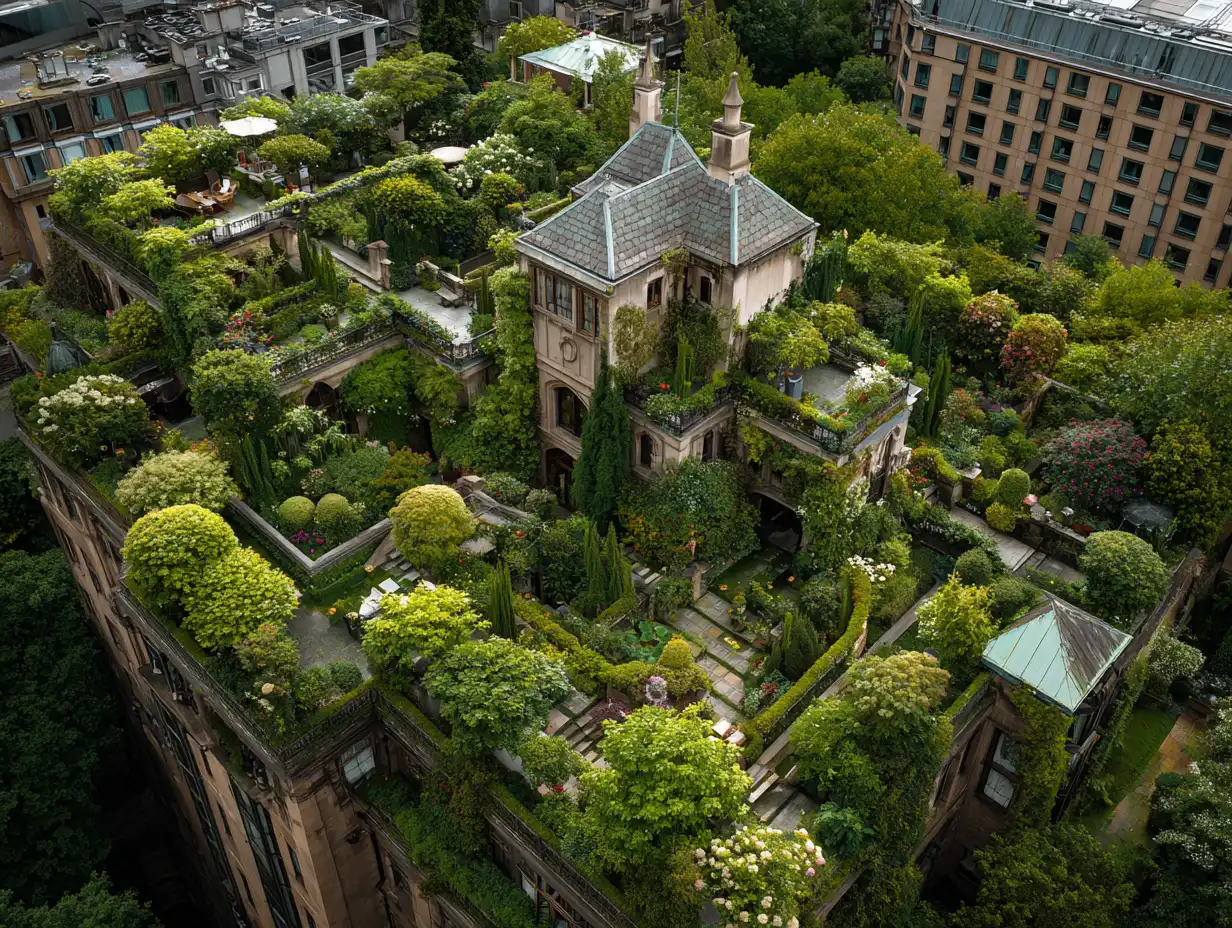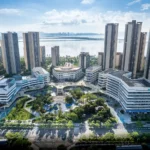Look across any big-city skyline and you’ll spot a quiet revolution: plants where there used to be tar. We’re seeing roof gardens, also known as green roofs, pop up on offices, apartments, schools, and even grocery stores. So why are roof gardens becoming common in cities now? Because multiple urban pressures and incentives have finally aligned. From extreme heat and flooding to health, cost, and policy drivers, rooftop greenery is no longer a nice-to-have. It’s becoming the practical layer cities need to thrive.
The Urban Forces Driving Rooftop Greenery
We’re living through hotter summers, heavier downpours, and denser development. Roofs make up a huge share of urban surface area, so it’s logical we turn them into assets rather than liabilities. Cities want to cut heat, manage stormwater, and meet climate goals, without sacrificing buildable land. Developers want lower operating costs and higher leasing appeal. Tenants crave access to nature and healthier spaces. And insurers, lenders, and regulators increasingly prefer buildings that reduce risk. When we combine these pressures with maturing technology and clearer payback models, rooftop greenery starts to look like the obvious choice.

We’re also seeing cultural momentum. People expect biophilic design in workplaces and homes. Restaurants want rooftop herbs: schools want outdoor classrooms. And frankly, a planted roof just photographs better, which feeds leasing, branding, and community goodwill.
Environmental Benefits Cities Can Measure
Cooling Urban Heat Islands
We all feel the difference between a shaded park and a black rooftop at noon. Vegetation cools through shade and evapotranspiration, which can lower roof surface temperatures dramatically compared with conventional membranes. That translates into cooler top floors, less AC demand, and a gentler microclimate around the building. At neighborhood scale, enough green roofs help chip away at the urban heat island effect that drives energy peaks and heat-related health risks.

Managing Stormwater And Flood Risk
A roof garden acts like a sponge. The growing media and plants hold rainfall, slow runoff, and reduce the volume entering storm sewers during peak events. Many cities now size green roofs as part of stormwater management plans, helping projects meet detention requirements right on site. The payoff is real: less combined sewer overflow, reduced flash flooding, and fewer fees where utilities charge for impervious area.
Improving Air Quality And Urban Biodiversity
Green roofs filter particulates, capture some pollutants on leaf surfaces, and create habitat patches for insects and birds. We’re not pretending an eighth-acre roof becomes Yellowstone, but linked pockets of native species can bolster pollinators and urban wildlife corridors. In neighborhoods with limited street trees, the biodiversity bump from rooftops is more than symbolic, it’s part of a citywide ecological network.
Social And Economic Payoffs
Well-Being, Community, And Access To Nature
We spend most of our lives indoors. Bringing nature up to the roof reduces stress, supports attention and productivity, and offers space to gather. For residents, a planted terrace turns an anonymous building into a home with a view. For workplaces, it’s a retention tool: places where we can meet, reset, or take a call among grasses and flowers. Those human benefits are hard to fake, and they show up in satisfaction surveys and leasing tours.

Urban Agriculture And Food Resilience
Not every rooftop should be a farm, but where structure and sun allow, rooftop beds can supply herbs, greens, and hyperlocal produce to tenants or nearby restaurants. We build food literacy for students, provide small business opportunities for urban growers, and add redundancy to local food systems, useful when supply chains wobble. Even a modest harvest changes how we relate to our buildings and seasons.
Energy Savings And Property Value
Plants shield roofing from UV and temperature swings, extending membrane life. Cooler roofs cut cooling loads. Combine those with utility incentives and stormwater fee reductions, and the operating math improves. On the market side, green roofs support certifications, boost curb appeal, and can lift rents or sales velocity, especially when they’re usable amenities rather than purely technical layers.
Policy And Market Momentum
Mandates, Incentives, And Stormwater Fees
Many jurisdictions now require or reward green roofs for certain building sizes or districts. Elsewhere, we can trade rooftop plantings for density bonuses or expedited permitting. Utilities increasingly use stormwater fees to nudge owners toward detention and retention. When we line up the carrots and sticks, adding a green roof often pencils out faster than it did a decade ago.

Green Building Standards And Corporate ESG
LEED, BREEAM, WELL, and local green codes recognize the benefits of vegetated roofs, offering points for heat island reduction, stormwater management, habitat, and occupant well-being. Corporate ESG goals then push portfolios to replicate what works. We’re seeing templates: once a company proves the cost-benefit on one site, it becomes the default spec across regions.
Design Types, Costs, And Maintenance
Extensive Vs. Intensive Systems
Extensive systems are lighter, shallower (often 3–6 inches), and geared toward hardy, low-profile plantings like sedums and native grasses, great for large roofs and limited budgets. Intensive systems use deeper media, support shrubs, small trees, seating, and paths. They’re heavier and costlier but deliver amenity value. We often mix zones: extensive for broad coverage and intensive for people spaces.

Retrofits Vs. New Construction Considerations
New builds can plan for load, access, and waterproofing from day one, by far the easiest path. Retrofits require structural assessment, wind uplift analysis, and careful detailing around drains and parapets. Prefabricated trays can simplify retrofits, while built-in-place layers offer more customization. Either way, we coordinate early with structural engineers and waterproofing consultants to avoid surprises.
Irrigation, Substrates, And Care Requirements
Green roofs aren’t set-and-forget. We specify free-draining engineered media (not typical topsoil), smart irrigation for establishment and heat waves, and plant palettes matched to sun, wind, and local climate. A maintenance plan, seasonal checks, weeding, fertilization where appropriate, and monitoring drains, protects performance and warranties. It’s routine groundskeeping, just a few stories up.
Addressing Challenges And Equity Concerns
Structural Limits, Costs, And Liability
Not every building can carry additional load, and waterproofing fears are real. We address both with engineering, warranties, and phased scopes. Costs vary by depth, access, and amenity level, so we right-size designs to project goals instead of chasing the most elaborate option.

Access, Safety, And Equitable Distribution
A lush penthouse terrace is wonderful, but we shouldn’t stop there. We can design shared access for residents, add educational plots on schools, and support community-led rooftops on public buildings. Guardrails, fall protection, and thoughtful lighting keep spaces safe and usable.
Designing For Local Climate And Long-Term Resilience
What thrives in Phoenix won’t love Seattle. We lean on native and climate-adapted species, drought strategies, and storm-hardening details. Redundancy in drainage, fire-safe plant choices, and clear maintenance roles help roof gardens endure, not just for photos on opening day, but for decades.
Conclusion
The reason why roof gardens are becoming common in cities is simple: they solve several urban problems at once. We cool buildings, soak up storms, support biodiversity, and give people dignified green space, while boosting building performance. If we treat rooftops as the fifth facade and plan for them early, the payoff is outsized. Our skylines can do more than shed water: they can help cities live better.
- benefits of roof gardens
- biodiversity in cities
- city rooftop gardens
- cityscape greenery
- community rooftop gardens
- eco-friendly roof design
- environmentally friendly roofing
- green roofs
- roof garden benefits
- roof garden installation
- roof garden trends
- roof gardens
- rooftop farming
- rooftop garden ideas
- solar and roof gardens
- Sustainable Architecture
- sustainable city design
- urban gardening
- urban green spaces
- urban roof gardens
- urban sustainability solutions
















Leave a comment